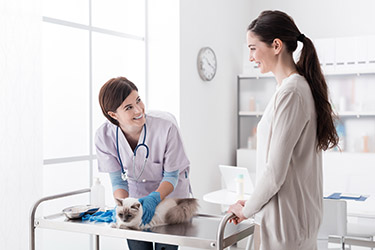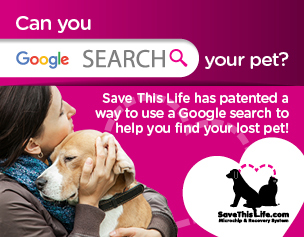Building a Cat Friendly Practice

Where to begin when making your clinic a cat-friendly space
Cats rank number one as the most popular pets in the United States. Making a few simple adjustments to your clinic’s environment and improving your feline handling techniques can make veterinary visits less stressful for cats and their owners.
In 2010, Dr. Ilona Rodan, owner of the Cat Care Clinic in Madison, Wisconsin, and diplomat of the American Board of Veterinary Practitioners, traveled the U.S. to give presentations on cat-friendly practices at conferences. In her travels, she visited several smaller practices and advised simple improvements including:
- Reconfiguring clinic space to keep cats away from dogs and other cats;
- Creating separate waiting areas by turning sofas back to back;
- Placing small scales inside exam rooms so that cats do not have to leave the room for weigh-ins.
She also suggested that cat owners do their part by familiarizing their cats with being in carriers and cars and bringing something that smells like home.
Proper handling technique
The first step in preparing for a feline visit is to prep the cat owners. The American Association of Feline Practitioners (AAFP) and International Society of Feline Medicine (ISFM) recommend the following suggestions for your clients:
- Rehearse visits and exams. Using positive reinforcements like treats and calming praise can lead to desired reactions and behavior.
- Adapt cats to carriers. Place your cat in a carrier and take him or her on short car rides.
- Bring a familiar item. Bringing a toy or blanket that reminds the cat of home will be a useful tool for comforting.
- Remain calm. Your own anxiety or stress can transfer to your cat.
- Notify the veterinary team in advance. This comes in handy if your cat is easily upset or stressed.
How to make your practice cat-friendly
In late 2016, Today’s Veterinary Nurse published an article on the experience of one clinic’s journey into becoming a more cat-friendly practice. Veterinary technician Esther Klok listed the following changes that were implemented in the practice:
- A former quarantine space was converted into an area for cats. Large cages were equipped with hiding spaces inside using cat carriers and/or cardboard boxes.
- Cages were designed with double doors so that cats can be approached from multiple angles, helping to avoid approaching them from the front.
- All examination room doors were equipped with locks to allow cats to roam freely in the room when the vet staff spoke with the pet owner.
- A large table was placed in the waiting room to allow cat owners a space to place their cat carriers away from dogs and out of the view of each other and other pets.
These are just updates made to the physical premises. Other changes included using insulin syringes for intramuscular injections, taking blood from the neck in fearful cats, placing the blood pressure machine inside the cat carrier to reduce stress, producing a flyer that explains transport techniques for cats and selling cat toys.
Should you take the extra step to get certified?
Cat Friendly Practices® is a program designed in an effort to make veterinary care less stressful for cats and their caregivers. It was established by the AAFP and the ISFM as a global initiative to improve cat care techniques and boost cat veterinary visits.
In a 2012 study, pet parents in the U.S. owned more than 74 million cats and 70 million dogs, but between 2006 and 2011, veterinary practices saw an increase in dog visits and a decrease in cat visits. This decrease has been attributed to a lack of cat-friendly practices. The Cat Friendly Practices® program was designed to address this issue and help to change even the smallest details that can really make a difference in preventive care.
Should you consider joining or simply making your own effort to become cat-friendly? Check your client data to see if you notice a decrease in feline visits. If you are, consider taking the first steps to becoming cat-friendly.
The AAFP and ISFM offer guidelines for feline-friendly handling here.
Contact your Covetrus representative for more information at 855.724.3461 or online.
Sources
https://todaysveterinarynurse.com/articles/becoming-a-cat-friendly-practice/
https://www.avma.org/News/JAVMANews/Pages/120301m.aspx
https://www.avma.org/News/JAVMANews/Pages/101101a.aspx
http://journals.sagepub.com/doi/pdf/10.1016/j.jfms.2011.03.012
https://www.catvets.com/cfp/cfp
https://vetsuccess.com/blog/certified-cat-friendly-practice/
https://www.catvets.com/public/PDFs/PracticeGuidelines/NursingCareGLS.pdf


Working Here
Our team members are encouraged to be the best they can be... at Covetrus we believe we impact one another.
Learn MoreNews & Events
FDA Cautions Pet Owners Not to Feed Texas Tripe Inc. Raw Pet Food Due to Salmonella, Listeria Monocytogenes
The U.S. Food and Drug Administration is cautioning pet owners not to feed their pets any of the Texas Tripe brand raw frozen pet food listed below because several samples of Texas Tripe raw pet food have tested positive for Salmonella and/or L. mono.
Careers
Are you looking for a place to let your talents shine? At Covetrus, we help our practitioner customers better serve their patients and take pride in providing the best customer experience possible. Search our open positions to see our available opportunities.
Newsletter
Stay current with what’s going on with Covetrus, subscribe to receive our newsletter and email communications. Subscribers will receive the latest information in practice management, sales and marketing, animal health, and more.



-3-(1).png?sfvrsn=2d806d73_0)

Leave a comment